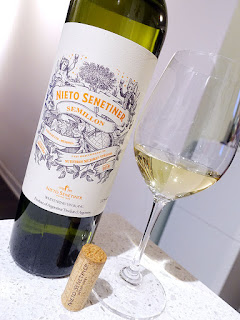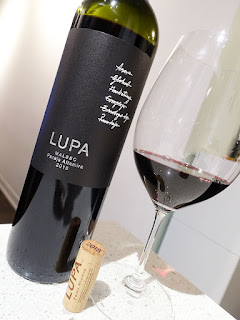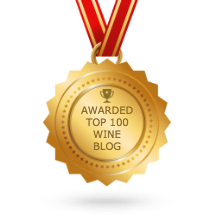The first Vitis Vinifera vines were introduced in Argentina by Spanish settlers in 1551 and they soon discovered that the soil and weather conditions favoured the growth of vines, especially in regions near the Andes Mountains. With the first Quinta Normal de Agricultura (School of Agriculture) inaugurated in 1853, the wine industry expanded nationwide. Fast forward to more recent times, modernization of the wine industry occurred during the 90s, leading to more wine being produced, as well as much more wine being exported to markets worldwide. Today, Argentina is the world's 5th largest wine producer, and 10th largest wine exporter with 895 wineries producing Vino Argentino. Locally, Argentina is the 9th most consumer of wine, with Buenos Aires 2nd in wine consumption per capita, behind only Paris.
Winegrowing activities are spread throughout the Argentina, from Salta in the north to Patagonia in the south, as well as in the Atlantic provinces. However, the workhorse of winegrowing in the country is the Cuyo region, representing 95% of the country's cultivated surface area. Moreover, Cuyo is the most prolific winegrowing region in South America and one of the most important worldwide.
Cuyo means "desert country" in the Huarpe Millcayac language of the native peoples that inhabited this area, prior to the arrival of the colonizers. This area is an arid and fertile region located in the central-west of the country, at the foot of the Andes mountain range. Making up Cuyo are the provinces of La Rioja, San Juan, and the famous Mendoza. Importantly, it is in Cuyo where the diverse character of Argentine viticulture is most evident. The region has a semi-arid climate with scarce vegetation, cold winters and hot summers which are enhanced by the influence of the Andes that also shows off its highest altitudes here and provides the main source of irrigation. The pure snowmelt water from the Andes feeds the main rivers of the region, which are then used by a system of reservoirs and channels for the irrigation of crops.
All of the lovely wines included as part of this tasting are from Mendoza. Malbec is by far the most widely grown varietal in the country, and these two wines are a chance to compare and contrast. Cabernet Sauvignon is becoming more widely planted, while Semillon from Argentina is a rare treat here in Ontario. The Cabernet Sauvignon arrives in LCBO VINTAGES on the weekend, while the other 3 wines are available right now in LCBO VINTAGES for your enjoyment as you explore some of the diverse wines of Argentina.
Tasting Notes:
NIETO SENETINER SEMILLON 2019 - Uco Valley, Mendoza, Argentina (#19399) (XD) - $15.95100% Semillon from vineyards planted in 1947 at more than 1,200 metres (3,930 feet) altitude, with 30% of the wine aged in barrels for 10 months. The elegant, fragrant, and complex nose delivers lovely aromas of paraffin, white floral, smoke, and herbs surrounding a core of white fleshed orchard fruit. The medium-full bodied, concentrated, structured, and powdery-textured palate is dry with spicy flavours of orchard fruit, tangy citrus, white floral, and herbs backed by fresh, lively, and juicy acidity. The paraffin and smoky flavours return on the leesy mineral finish, with excellent length. New in Oct. 30 LCBO VINTAGES Release. Agent: Sylvestre Wines & Spirits. Score: 90 pts
LUIGI BOSCA MALBEC 2019 - Mendoza, Argentina (#452672) (XD) -
This 100% Malbec was grown in Luján de Cuyo and Uco Valley, from vines averaging 35 years of age, and between 900 to 1,100 metres (2,950 to 3,600 feet) altitude. It was aged for 12 months in French oak barrels. The fragrant, medium-high to highly aromatic nose offers lovely aromas of ripe, dark fruited, blackberry, black cherry, and dark currant aromas surrounding a core of smoky, earthy, and savoury mineral. On the ripe, full-bodied, and fleshy palate, it has spicy dark berry flavours of blackberry, black cherry, and grilled herb with violet and boysenberry accents, followed by savoury, stony mineral notes. Acids are fresh, juicy, and well-balanced, while the smooth, refined tannins are dusty textured. Subtly spicy on the mid-palate, with smoky, stony mineral notes lingering on the finish, with very good length. VINTAGES Essentials. Agent: FWM Canada. Score: 89 pts
LUPA MALBEC 2018 - Paraje Altamira, Uco Valley, Mendoza, Argentina (#629964) (XD) - $38
100% Malbec from 60 year old vines grown on calcareous soils of alluvial origin at 1,180 metres (3,609 feet) above sea level. It was fermented in concrete tanks with native yeasts, then aged for 21 months in mostly used French oak barrels. Recyclable, plant-based cork. Fine, attractive, and highly aromatic nose has spicy and minerally aromas surrounding a core of ripe dark berry, blackberry, and purple fruit, accented with dried herbs and subtle wood spice. It’s medium-full bodied and slightly warming with spicy, ripe blackberry, violet, mineral, and wood flavours supported by juicy, mouth-watering acidity. The structured and refined tannins are lightly chalky textured and drying. Very satisfying, minerally aftertaste with excellent length on the finish. Enjoy over the next 5-6 years. VINTAGES Classics September 2021. Agent: DB Wine & Spirits. Score: 91+ pts
BODEGA PIEDRA NEGRA GRAN LURTON SINGLE VINEYARD CABERNET SAUVIGNON 2018 - Los Chacayes, Uco Valley, Mendoza, Argentina (#980334) (XD) - $24.95
The fresh, fragrant nose offers lovely dark red fruited, cassis, currant, earthy, and mineral aromas accented with leafy herbs and whiffs of cocoa powder. On the full-ish bodied palate it is ripe and complex with tangy red and black fruits, currant, blackberry, raspberry, black plum, oak spice, and graphite flavours, all supported by fresh, juicy acidity. The structured and youthful tannins are quite firm and drying at this stage. Lovely graphite and dark berry notes linger on the long-lasting finish. Approachable now, but will reward cellaring for 2-3 years. Dec. 11 LCBO VINTAGES Release. Agent: Trajectory Beverage Partners. Score: 90 pts













0 comments:
Post a Comment
Note: Only a member of this blog may post a comment.